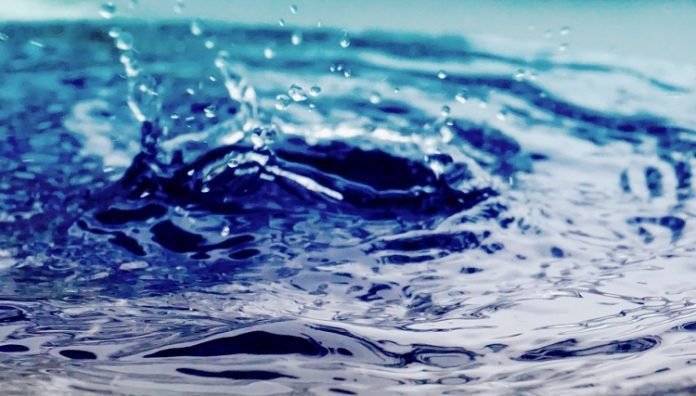Last Updated on March 23, 2024 by Saira Farman
Water use varies from nation to nation and culture to culture. American families, for example, go through an average of 300 gallons per day for both indoor and outdoor use. Now, as we shift into a world with limited resources and rising bills, more households are looking for ways to change their water consumption. For many, rainwater harvesting is the perfect solution.
At its core, rainwater harvesting refers to the process of collecting rainwater run-off and using it to fulfill a variety of needs. How you collect rainwater and how you use it are up to you.
Not sure where to get started? You’ve come to the right place. Read on for our tutorial on setting up your very own rainwater harvesting system.
Table of Contents
How Does Rainwater Harvesting Work? The Basics
As we mentioned earlier, rainwater harvesting refers to the practice of collecting and reusing rainwater. More specifically, a homeowner can collect the water that runs off of their roof during year-round rainfall.
How does this work? Your roof most likely already has a system of gutters and downspouts to direct water off of the roof and away from your property. The objective is to prevent water from damaging your land as well as your foundation.
When you use a rainwater harvesting system, you simply add another step to the process. Rather than guiding water off of your roof and back into the earth, you guide the water into a large rain barrel or water tank. You can then use this water to fulfill a variety of needs.
Why Is Rainwater Harvesting Appealing for Homeowners?
Rainwater harvesting is on the rise in countries like Australia and Germany. Soon, we predict a rise in rainwater harvesting in more nations that invest in greener uses of resources. Why is this such an appealing option for so many homeowners?
Rainwater harvesting can:
- Give you access to relatively clean water (which you can further purify if necessary)
- Give you more control of your water use in areas with water restrictions
- Increase your eco-friendliness by reusing a natural source of water
- Lower your water bill (or eliminate it entirely)
- Reduce run-off and erosion caused by run-off
- Provide chlorine-free water for your garden
Rainwater harvesting is also appealing because it isn’t difficult to do. You can install a simple system on any property. This system is easy to relocate or expand if you so choose and it isn’t expensive to maintain.
What Kinds of Storage Vessels Can You Use?
There are three primary storage vessels to consider when investing in rainwater harvesting.
The simplest and most common rainwater harvesting vessel is the simple rain barrel. This is the system used by individuals who are looking to water their land and garden with rainwater. All you need to do is install a rain barrel beneath your downspout and hook it up to a hose or irrigation system.
If you’re looking to maximize your use of rainwater, a rainwater tank is the way to go. Rainwater tanks are used to create “dry” systems or “wet” systems.
A dry system uses a similar setup to the rain barrel system, although the storage vessel is much larger. Rainwater is collected from the downspout and falls directly into the tank.
A wet system is quite different. In a wet system, underground pipes connect to multiple downspouts on one end and your rainwater tank on the other. Wet systems allow you to collect all of the water from your roof and also allow you to locate the tank farther away from your house.
If you’re interested in a larger rainwater tank, visit https://pioneerwatertanks.com.au/rainwater-tanks-for-your-home/.
What Are Some of the Uses of Collected Rainwater?
If you want to start out with a simple rainwater harvesting system, you can try using a rain barrel for irrigation. In other words, you can collect a small amount of rainwater to supplement your gardening and landscaping needs.
When we’re talking about indoor use of rainwater, we’re talking about two different categories. There is non-potable rainwater use and potable rainwater use. Potable rainwater use means that your rainwater is clean enough to drink and use in cooking.
Naturally, potable rainwater use will require a more complicated system. However, the initial investment will lead to impressive savings down the road.
In fact, even if you use rainwater to supplement a fraction of your water use, you can save a good amount of money. For example, using rainwater for appliances like your dishwasher and washing machine can save gallons of municipal water every week.
How Much Rainwater Can You Collect in Your Area?
Before you decide how you want to use your collected rainwater, it’s important to determine how much rainwater you can actually collect. Depending on where you live, you may not get enough rainfall to sustain all of your water needs.
To calculate an estimate of how much rainwater you can collect, find out the following things:
- Your roof area (ft. squared)
- Average rainfall in your area (inches)
Then, use the following formula: roof area x average rainfall x 0.623. This will give you an idea of the maximum amount of water you can collect in one year.
Save Money and Conserve Water With Rainwater Harvesting
Are you looking for more ways to save money and conserve the earth’s natural resources? If so, rainwater harvesting is the perfect sustainable option that is easy and affordable to implement. No matter what kind of property you have, some form of rainwater harvesting is available to you.
If DIY home improvement is one of your favorite pastimes, you’ve come to the right place. Take a look around for guides and tips for your next big DIY improvement–and advice on when to call in the professionals.
Apart from that, if you are interested to know about Importance of Septic Tank Pumping then visit our Home Improvement category.



























